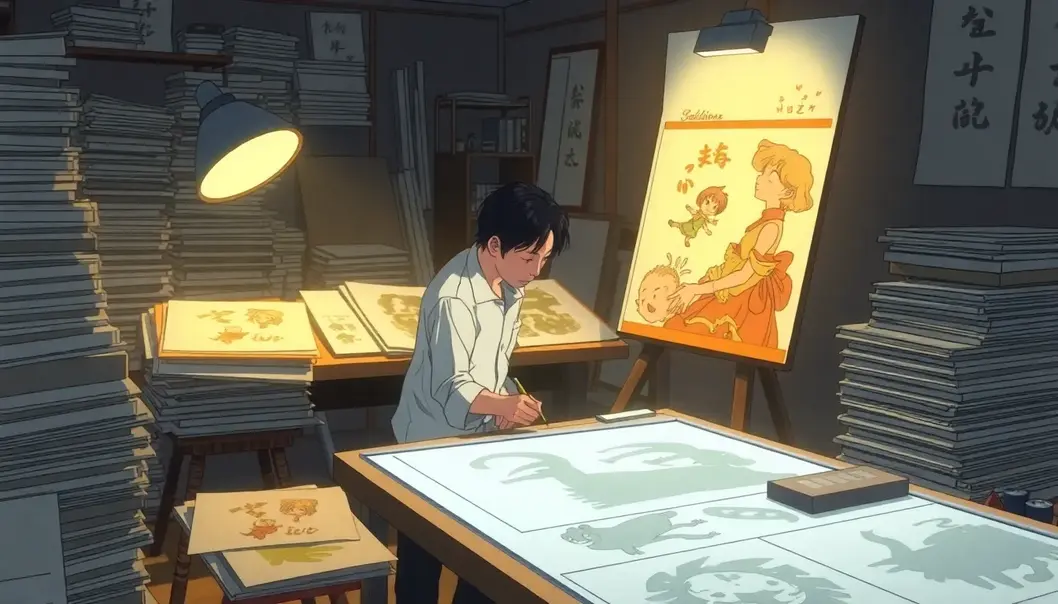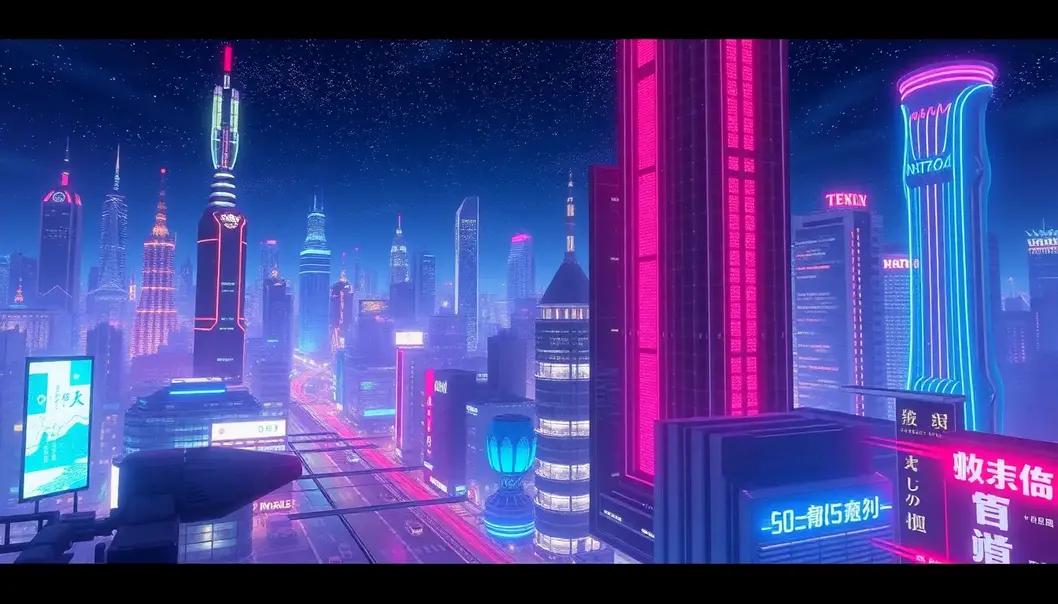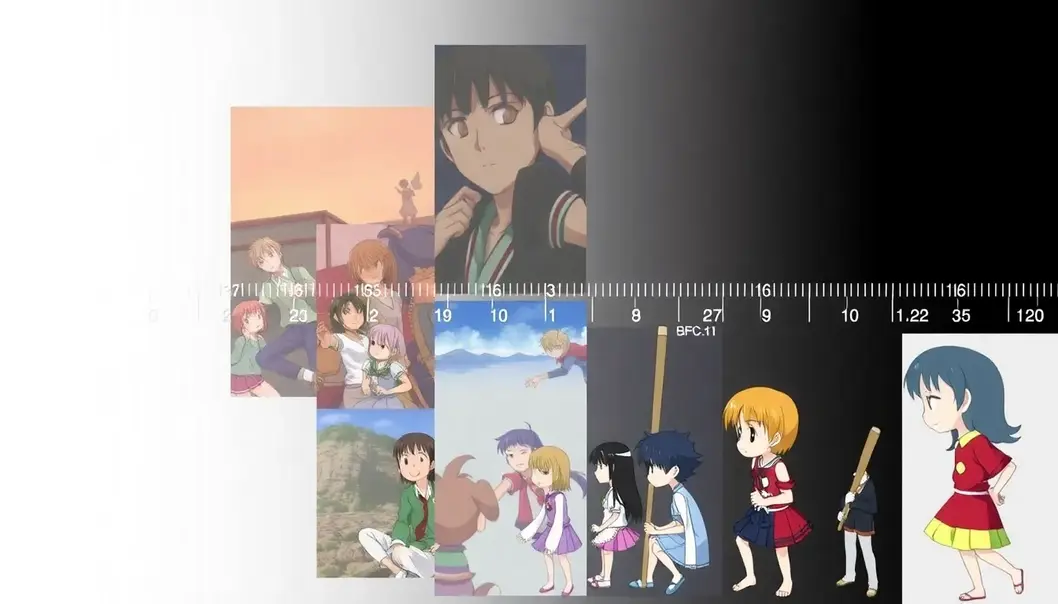Animation is a mesmerizing art form that has drastically evolved through decades of technological advancements and creative innovations. For anime fans, this journey is particularly enchanting as it straddles the line between art and technology to create worlds that inspire and captivate millions. From primitive short films to today’s awe-inspiring computer-generated imagery, animation symbolizes the spirit of storytelling, mirroring cultural shifts and technological advancements. Whether it’s hand-drawn cel animation of the early 20th century or today’s HD virtual reality experiences, the evolution of animation is a testament to human creativity and technical prowess, making it an endless source of fascination and exploration for anime aficionados.
The Origins: Cel Animation and Its Impact

The journey of animation art is deeply interwoven with the technique of cel animation, a cornerstone for early anime. Cel animation, short for celluloid animation, involves painting characters and backgrounds on transparent sheets—cels. This method revolutionized animation by allowing foreground elements to move independently while maintaining a consistent backdrop.
In the early 1960s, when television demanded cost-effective animation, cel animation became the medium of choice. It was meticulously labor-intensive, requiring each movement to be fractionally captured to convey fluid motion. One of the seminal works that emerged during this era was Astro Boy, created by Osamu Tezuka, often referred to as the “father of manga.” His work epitomized how cel animation could breathe life into static drawings, crafting dynamic and emotionally resonant storytelling.
A comprehensive list of tools was essential for this process: drawing pencils, inks, and, of course, the transparent cellulose nitrate or acetate sheets. Each detail, from a character’s expressive eyes to the dynamic cityscapes, was hand-drawn and painted under studio lights. These foundational tools were melded with animators’ skills to render the movement compelling and natural.
In the following decades, innovators like Hayao Miyazaki, with works such as Nausicaä of the Valley of the Wind, pushed cel animation boundaries further. Miyazaki’s Studio Ghibli has become synonymous with intricate world-building and character depth. Their films showcased how the merge of exquisite artistry and cel techniques could develop richly layered narratives that captivated international audiences.
One landmark achievement was the production of Akira in 1988, a film known for its groundbreaking visual style and attention to detail. This project featured over 160,000 animation cels, pushing the cel animation technique to its limits. The sheer complexity illustrated a dystopian future with seamless choreography that was unheard of at the time.
Studios such as Toei Animation and Studio Ghibli became powerhouses by harnessing cel animation’s potential to craft engaging and aesthetically stunning narratives. Such studios helped position anime firmly within global pop culture, demonstrating its potential as a rich and varied art form.
Moreover, the cel animation process encouraged a unique aesthetic that emphasized minimalist lines and exaggerated emotions, elements which persist in today’s digital animations. As technology advanced, transitioning towards digital techniques, the painstaking detail of each cel laid a foundation that continues to inspire new generations of animators and storytellers.
While we move into an era of CGI and digital animation, the influence of cel techniques remains indelible. The memories of watching hand-crafted scenes from classics like Astro Boy or Akira resonate deeply within the hearts of anime enthusiasts, bearing testament to cel animation’s enduring legacy.
The Digital Age: CGI and the New Frontiers

The advent of CGI in anime heralded a significant transformation, akin to the leap from black-and-white to color TV. As analogue gave way to digital brushstrokes, the industry embraced a new realm of storytelling possibilities. This transition to CGI did not merely enhance visual aesthetics; it fundamentally altered how creators crafted and conveyed narratives.
In the realm of anime, series like ‘Ghost in the Shell’ and ‘Attack on Titan’ epitomize the revolutionary potential harnessed by CGI technologies. ‘Ghost in the Shell’ marries traditional narrative depth with cutting-edge CGI, painting a world where cybernetic and human lives intertwine, creating a unique philosophical tapestry. Similarly, ‘Attack on Titan’ leverages CGI to construct breathtaking, panoramic views of colossal battles, maintaining a visceral intensity that traditional methods struggled to replicate.
The fusion of 2D and 3D techniques has been particularly groundbreaking. By integrating CGI with hand-drawn elements, animators crafted a hybrid aesthetic that defies the line between two-dimensional allure and three-dimensional realism. Such techniques are pivotal in crafting environments with profound depth, allowing scenes to breathe with an unprecedented dynamism.
This blend has stretched the boundaries of what anime can depict, enhancing the medium’s ability to explore intricate storylines. For instance, CGI’s efficiency in depicting complex action sequences elevates tension in narratives, engaging audiences with both spectacle and substance. The precision with which CGI can simulate lights, shadows, and textures enriches the visual storytelling, embedding layers of meaning and emotion into each scene.
Moreover, the digital evolution has streamlined the production pipeline, reducing the arduous manual labor characteristic of cel animation. CGI-backed processes have democratized anime production, allowing diverse voices to contribute to the art form’s rich tapestry. This efficiency contributes to a boom in global access to high-quality anime, expanding fandom beyond traditional borders.
The global appeal owes much to this technological evolution, enabling creators to craft universes that translate across cultural lines. With digital distribution, anime transcends geographical constraints, capturing imaginations worldwide. The digital frontier of CGI continues to propel anime into new narrative and aesthetic heights, affirming its power to connect and innovate in the ever-dynamic entertainment landscape.
Final words
From its humble beginnings with cel animation to the complex CGI of today, the evolution of animation narrates a compelling story of innovation and artistry. Anime, as a vital part of this narrative, continues to push boundaries and explore new storytelling avenues. It’s a journey that mirrors technological advancements and cultural shifts, forging a rich tapestry of creativity that enlivens our screens. As anime continues to evolve, it holds the power to enchant and inspire generations, providing a timeless window into the imagination.
Embark on your own anime journey and explore our extensive collection of classics and modern hits. Dive into worlds of wonder and excitement!
Learn more: https://www.animeexplorer.com/collection
About us
Anime Explorer offers a vast library of anime spanning the history of this vibrant art form. From rare classic gems to cutting-edge CGI marvels, immerse yourself in the vast worlds anime has to offer. Join our community for exclusive discussions, reviews, and recommendations, bringing anime fans together in a shared passion.
